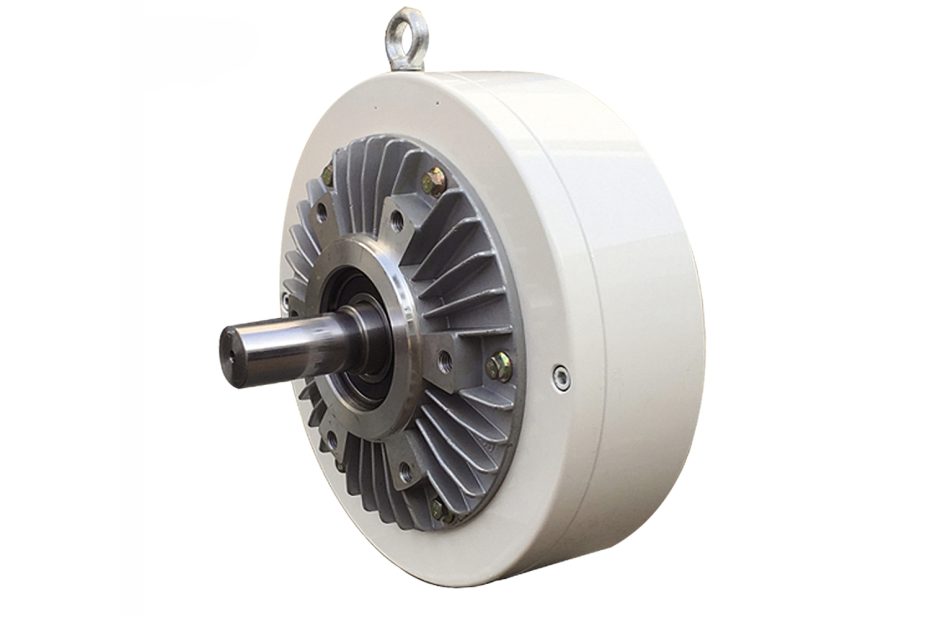The Magnetic Particle Brakes is based on the electromagnetic principle and uses magnetic powder to transmit torque. It has a basically linear relationship between the excitation current and the transmission torque, and can transmit a certain torque regardless of slip.
Magnetic Particle Brakes operate on the principle of utilizing magnetic fields to control torque. This mechanism makes them particularly useful in automotive testing, where precise control of rotational speed and torque is vital. These brakes find applications in various testing scenarios, including dynamometer testing, durability testing, and performance evaluation.
Magnetic Particle Brakes : Top 4 Key Features
Magnetic Particle Brakes has fast response speed and simple structure. It is a multi-purpose automatic control component with superior performance.
1. Torque Control Precision
Magnetic Particle Brakes offer unparalleled torque control precision. This is achieved by adjusting the magnetic field strength, allowing for incremental changes in torque levels. In automotive testing, where even the slightest variations can impact results, this precision is indispensable.
2. Speed Stability
The inherent design of Magnetic Particle Brakes ensures excellent speed stability. This is particularly advantageous in scenarios where consistent rotational speeds are required for accurate testing. Whether it’s evaluating engine performance or assessing transmission components, the speed stability of these brakes is a key asset.
3. Compact and Lightweight Design
Another notable feature is their compact and lightweight design. This makes Magnetic Particle Brakes easy to integrate into testing setups without adding significant bulk. In automotive testing facilities where space optimization is crucial, these brakes offer a practical solution.
4. Quick Response Time
Quick response time is vital in dynamic testing environments. Magnetic Particle Brakes exhibit rapid response times, allowing for instantaneous adjustments to torque and rotational speed. This feature is particularly beneficial in scenarios where abrupt changes in load conditions need to be simulated.

Magnetic Particle Brakes : Applications in Automotive Testing
The seamless integration of Magnetic Particle Brakes in automotive testing environments is further enhanced by their adaptability and versatility. Their ability to function in various testing scenarios makes them a preferred choice for engineers and researchers seeking comprehensive and reliable data.Magnetic Particle Brakes find widespread use in automotive testing across various applications:
1. Dynamometer Testing
In dynamometer testing, where the performance of engines and drivetrain components is assessed, Magnetic Particle Brakes play a crucial role. The torque control precision and speed stability of these brakes ensure accurate and repeatable test results.
2. Durability Testing
Durability testing involves subjecting vehicle components to prolonged stress to assess their lifespan and reliability. Magnetic Particle Brakes, with their ability to provide consistent torque and quick response times, are instrumental in conducting rigorous and reliable durability tests.
3. Performance Evaluation
Assessing the performance of various vehicle systems, such as braking systems or suspension components, requires precise control over torque and rotational speed. Magnetic Particle Brakes facilitate such evaluations by offering the necessary control and stability.
Magnetic Particle Brakes vs. Traditional Braking Systems
| Feature | Magnetic Particle Brakes | Traditional Brakes |
|---|---|---|
| Torque Control Precision | High | Moderate |
| Speed Stability | Excellent | Varied |
| Compact Design | Yes | No |
| Quick Response Time | Rapid | Delayed |
Conclusion
In conclusion, Magnetic Particle Brakes emerge as indispensable components in automotive testing, offering precise torque control, speed stability, compact design, and quick response times. Their diverse applications, especially in dynamometer testing, durability testing, and performance evaluation, underscore their significance in ensuring the reliability and safety of vehicles. As automotive technology continues to advance, Magnetic Particle Brakes will likely play an increasingly pivotal role in shaping the future of automotive testing.
